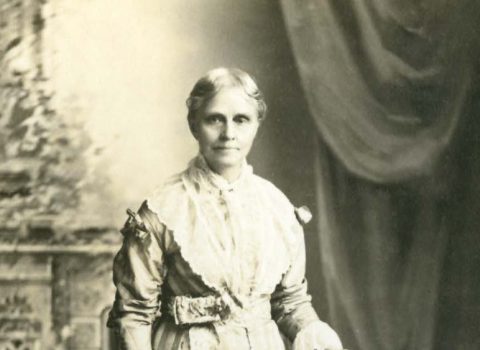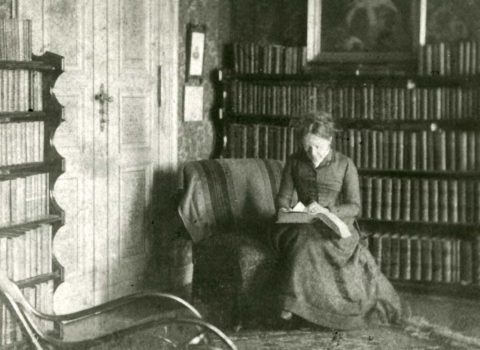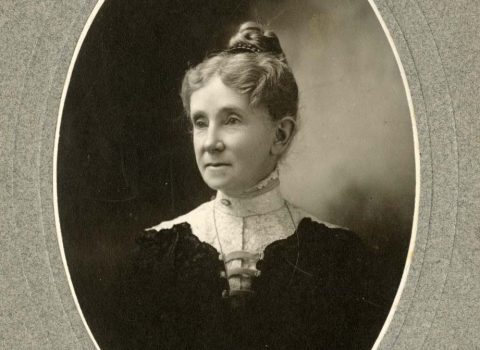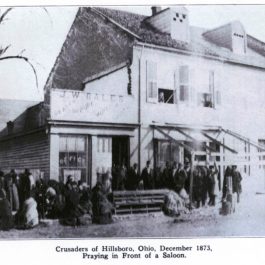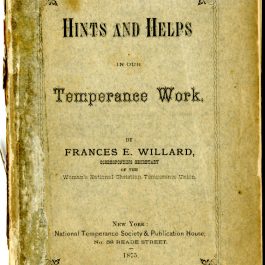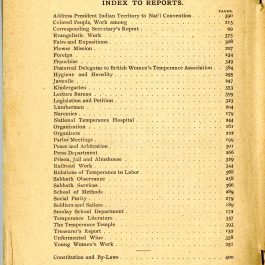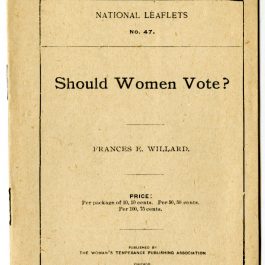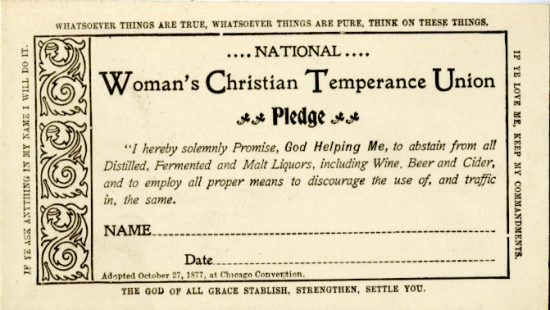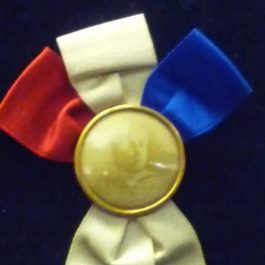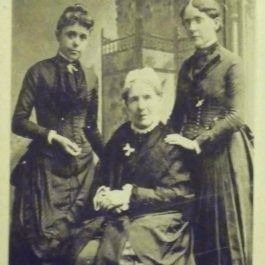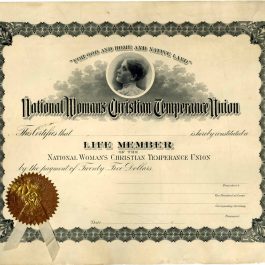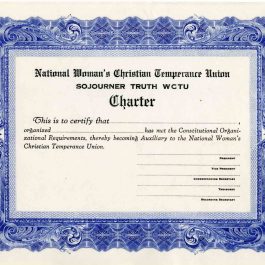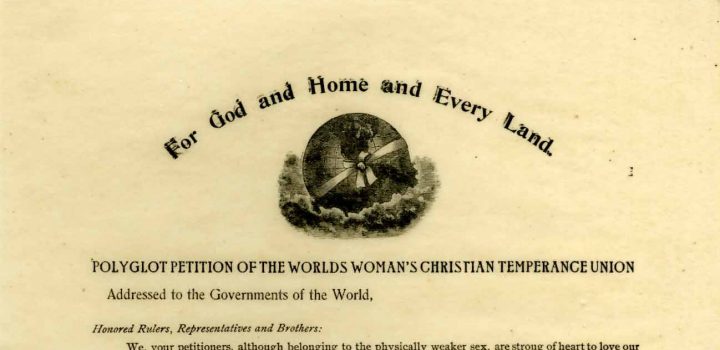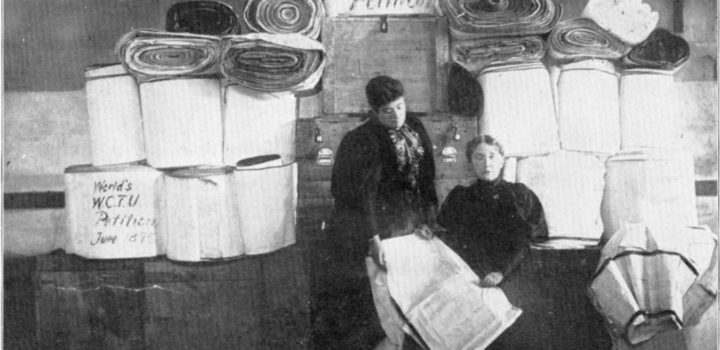Leadership: 1874-1898
The women who were Willard’s neighbors and friends–faculty wives, ministers’ wives—provided Willard with many inspiring examples of womanly activism. Three of the women of Evanston who influenced Frances Willard are pictured here. All three women were involved in the Women’s Temperance Alliance, the fore-runner to the Woman’s Christian Temperance Union (WCTU), and later in the WCTU itself. They are among the many Evanston women described in A Classic Town.
The Woman’s Christian Temperance Union
Willard found her life-work when she became involved in the Woman’s Christian Temperance Union (WCTU) in 1874, the year it was founded as the first temperance organization run solely by women. In 1879 she became the second president of the National WCTU, defeating the organization’s first leader, who opposed the concept of incorporating woman suffrage into the WCTU’s mission. Willard was reelected to the presidency of the WCTU every year until her death in 1898. She also served as president of the World’s WCTU, founded in 1883. Under her leadership, the WCTU developed from a small, one-goal organization into a network of two hundred thousand women pursuing wide-ranging social reform (with the motto “Do Everything”) while they themselves learned to step into the public sphere. Willard’s own talent for leadership enabled her to elicit the loyalty and solidarity of a diverse group of women who admired and, to an extent, worshipped her.
Inspired by powerful temperance speaker Dio Lewis, women in one small Ohio town took to the streets, praying outside (and inside) local saloons to shame the owners and customers into giving up alcohol. The idea spread to other towns, where groups of middle-class women forced saloonkeepers to close down and their customers to sign the temperance pledge. The crusade made a short-lived impact on the saloons (most reopened soon after), but inspired a group of women (including several Evanstonians) to form a new organization: the Woman’s Christian Temperance Union (WCTU). Established in Cleveland in 1874, the WCTU–the first woman-run temperance organization– set three goals: to educate Americans about the ill effects of liquor, to agitate for legislation prohibiting the sale of alcohol, and to organize women across the nation to work toward these goals. The organization would consist of an ever-growing number of local branch Unions in cities and towns across the US which reported to the National WCTU. Willard joined the WCTU immediately and was appointed Corresponding Secretary to the National WCTU; she was later was President of the Illinois WCTU. She gained enough visibility in these roles to be elected President of the National WCTU in 1879. Her organizational skills and broad vision transformed the young organization.
Signing the Pledge
Convincing men, women, and children to “Take the pledge” to abstain from alcohol was the basic goal of every WCTU member. Signing an agreement to refrain from drinking had been a practice of temperance advocates for many years before the WCTU (Willard herself had signed the pledge in 1856). The WCTU—national and local–produced pledge cards in many formats, suited to every age group from children to young people to adults. Featured here is a pledge card with a familiar motto across the top (“Whatsoever things are true….”).
Membership
Thousands of women became members of the WCTU (men could become honorary members). Pictured are two kinds of membership certificate. The left certificate registers an individual as a Life Member. The right certificate registers a WCTU chapter specifically for African American women–as indicated by the title “Sojourner Truth WCTU.” (FWHA)
The Polyglot Petition
Petitions had been an important and recurring weapon in the WCTU’s arsenal since the beginning. Even without the right to vote, women could express their views by signing resolutions which were then presented to governing bodies. In 1879 Willard had presented a petition with over 170,000 names on it to the Illinois House to convince legislators to permit the Home Protection Ballot, which would allow women to vote on such issues as local restrictions on the sale of alcohol.
Even when they didn’t result in legislation, petitions made a statement. In the mid-1880s, with the revival of the World’s WCTU, Willard launched the Polyglot petition. WCTU missionaries obtained signatures from men and women around the world who wanted their governments to prohibit the sale of alcohol and opium. Over 7,500,000 signatures were gathered on petition forms, which were sent back to the National WCTU headquarters and pasted onto rolls of canvas by country, province, or state. The hundred or so existing rolls, housed in the Willard Archives and the Frances Willard House Museum, are in fragile condition and cannot be unrolled.
More Information
This exhibit features items from Northwestern University Archives (NUA)
and the Frances Willard House Museum & Archives (FWHA).

